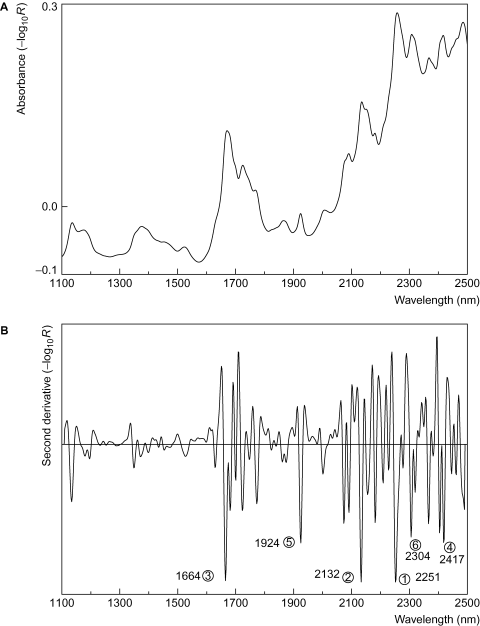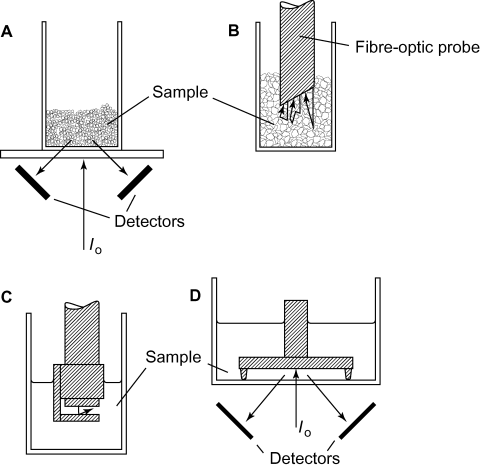
Figure.1. (A) Near–infrared spectrum of acetomenaphthone measured by reflectance; (B) second–derivative spectrum of (A). Circled numbers indicate the six most intense negative peaks in order of decreasing intensity.

Figure.2. Vibrational energy levels for a diatomic molecule illustrating the transitions that correspond to the fundamental frequency (v = 0 → v = 1), first overtone (v = 0 → v = 2) and second overtone (v = 0 → v = 3).
![]()
Reflectance and transmission

![]()
![]()
Instrumentation
Data processing and presentation of results
- horizontal background
- linearly sloping background
- a curved background plus zero offset.

Figure 4. Advantages of using second–derivative spectra: (A) original spectra, (B) first–derivative spectra, and (C) second–derivative spectra. 1, zero baseline; 2, linear sloping baseline; 3, curved (quadratic) baseline with offset.

Figure 5. Simple difference method for calculating derivative spectra. ss, Number of data points in the sample block; gs, number of data points in the gap block.

Figure 6. Effect of particle size on the reflectance spectrum of lactose monohydrate. Sieve fractions: (a) >150, (b) 93, (c) 63, (d) 45 and (e) 32 μm. A, original spectra; B, spectra after standard normal variate (SNV) transformation.

Systems suitability test
Wavelength accuracy
Wavelength repeatability
Photometric noise
Photometric accuracy, linearity and specular and/or stray radiation
![]()
![]()
where Io, ID, Is and Iss are as defined in Fig.8 and k and k′ are constants (and therefore Ir = ID + Is + Iss). oc represents the intensity of radiation reflected by the instrument reflectance standard. The above assumes that the collection efficiency and/or geometry is the same for both the reference and sample.
Sample preparation and sample presentation

Figure.9. Sample presentation methods: (A) sample bottle on sample stage, (B) fibre–optic probe, (C) liquid sample using a fibre optic probe fitted with transflectance adapter, and (D) liquid sample measured by transflectance.

Figure 15. Spectra illustrating the method of maximum distance in wavelength space. Mean spectrum (solid line) with ±5.04 standard deviations envelope (dashed lines) for chlortetracycline hydrochloride (20 spectra, 690 wavelength data points). There is a 95% probability that another spectrum from the same population will fall within the envelope.
Interpretation of spectra

Figure 11. Wavelengths of important near-infrared absorbances. Black lines show regions of absorption.
Qualitative analysis
Peak positions
Correlation in wavelength space


Correlation in wavelength space
Maximum wavelength distance


Other classification procedures
Creating a database
Problem compounds
Detection of counterfeit materials

Figure 16. PCA score plot (first three principal components, PC1, PC2 and PC3) illustrating the detection of counterfeit tablets. (a) and (b) genuine product; (c), (d) and (e) counterfeit samples.
Quantitative analysis
- selecting/preparing a set of samples
- measuring their spectra and determining their reference values
- developing and selecting the best model
- validating the model.
![]()


Figure 17. Typical validation plot of near-infrared predicted value against reference value.
Near–infrared imaging
Collections of data
Last modified: 20 May, 2017



